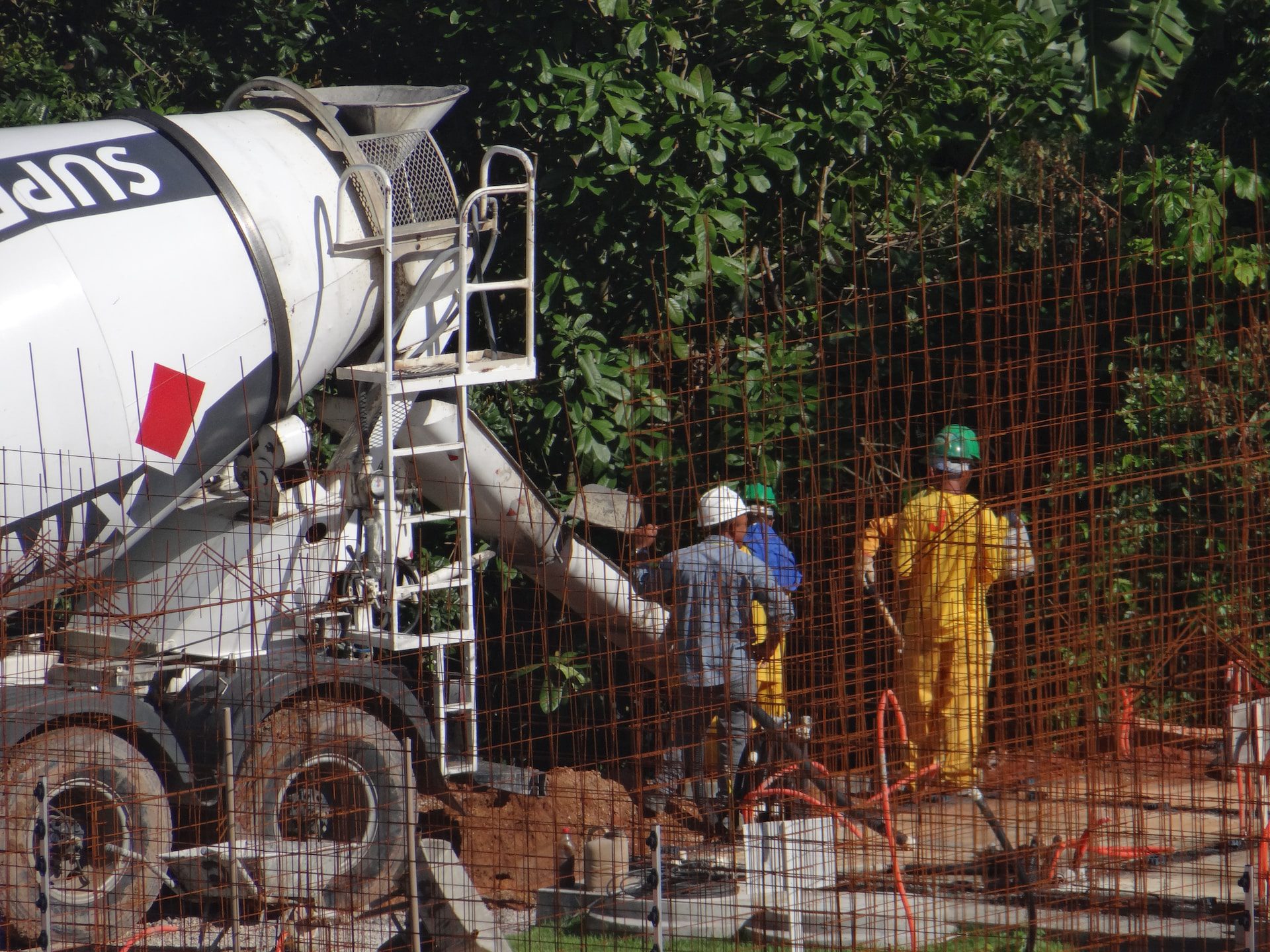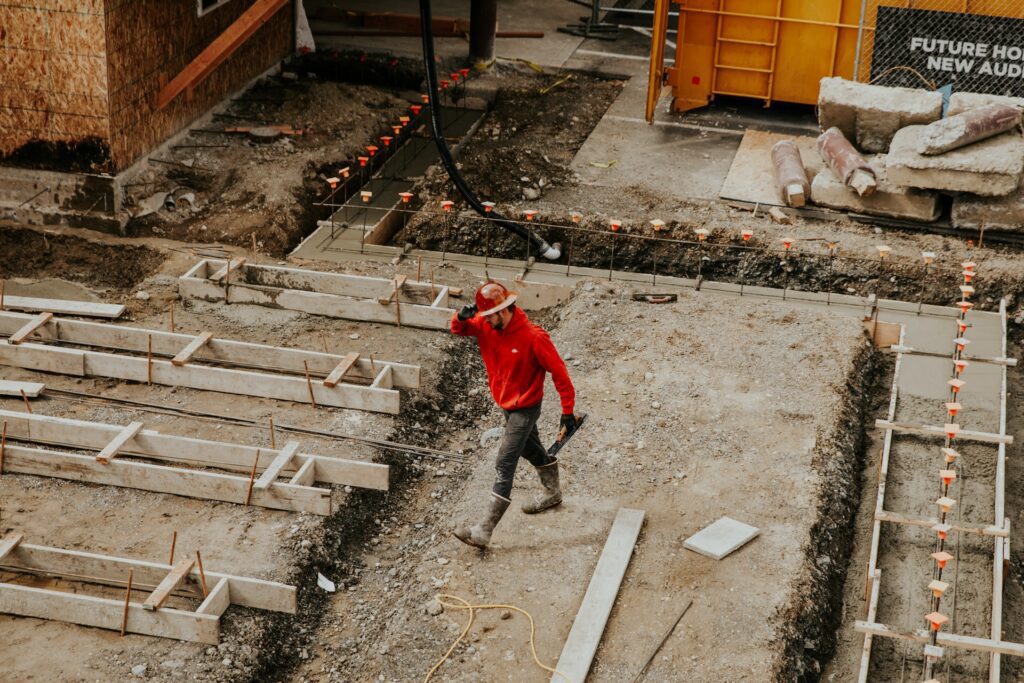06/20/2023 | Industrial Wastewater | 8 MINUTE READ
Concrete Waste Disposal: Best Practices for Managing Wastewater

In 2022 alone, more than 120 million metric tons of cement were used across the U.S., most of which was necessary for construction projects. Over the past decade, concrete usage has increased nearly every year.
Whether you use a ready-mix solution or traditional concrete, construction crews are tasked with mixing concrete with water to create a paste. When this occurs, many gallons of water are used to effectively mix the concrete and make sure that the equipment is clean.
To understand just how much water this process uses, cleaning just one concrete truck drum takes up around 150-350 gallons of water. A ready-mix plant may use as much as 3,000-5,500 gallons of water each day. Keep in mind that there are currently around 6,000 ready-mix plants, which means that the concrete industry requires a substantial amount of water resources.
The main problem with the wastewater that’s produced from this process is that it has a high pH, which makes it impossible for it to be discharged or reused unless it’s effectively filtered. In fact, the pH of this wastewater oftentimes exceeds 12.0, which means that it could be hazardous. In this scenario, the water will be comprised of stone, sand, toxic metals, chemicals, and a wide range of additional contaminants. In this article, you’ll discover the best practices for managing concrete wastewater.

The Basics of Wastewater Treatment for Concrete Production Applications
When concrete is produced, it generates a large amount of wastewater that needs to be treated to make sure the plant or facility complies with regulations and prevents harm to the environment. Keep in mind that having too much waste can also result in a reduction in operational efficiency as well as a drop in profits.
You can bypass these issues by performing on-site wastewater treatment with filtration techniques. Doing so will save you money, allow you to reuse the water, and help you improve your facility’s sustainability. While it’s possible to pay a third-party company to move and treat your wastewater, this option is highly expensive and inefficient. It also means that you won’t be able to reuse the water once it’s been treated. By effectively treating the wastewater, you’ll be able to keep costs down and improve the cleanliness of your water.
Effective Solutions for Concrete Wastewater Treatment
There are several effective solutions for treating concrete wastewater. In the event that your facility produces a high amount of concrete, it’s likely that you’ll encounter a considerable amount of wastewater pollution. To reduce disposal costs and meet the strict wastewater discharge regulations, your facility should perform pretreatment before using a potent solution to better maintain the water’s pH levels.
The main treatment that’s used to filter concrete wastewater involves dewatering filter equipment, which is capable of removing iron oxide color pigments and crushed cement fines. This treatment method is most effective when used to treat wastewater from precast concrete or ready-mix concrete. If you’re experiencing high-strength concrete wash-up, odd colors, or high return rates, it’s recommended that you treat the wastewater immediately to bring it under industry regulation standards.
Once you’ve integrated the best treatment system into your facility, you should be able to:
- Improve the efficiency of your concrete reclaimer
- Eliminate pond dredging and weirs
- Minimize your concrete slurry hauling expenses
- Get rid of suspended solids
The slurry that’s produced from process water or concrete washout consists of a high pH as well as contaminants like chemical mixtures, grease, oil, and suspended solids. One solution you can use is a filter press, which gives you the ability to treat, move, and get rid of waste while also reclaiming nearly all of the water. Filter presses are often equipped with automatic washing systems that accommodate the treatment process.
It’s also possible to obtain filter presses that come with membrane plates. When sending the slurry through membrane plates, the resulting cakes will contain very little moisture. Membrane squeezing ensures that nearly all the water is removed. The inclusion of a core blow system helps you clean out any residual liquid that remains after the membrane plates have been used. These systems may include compressed air. Once any remaining liquid is removed, the resulting sludge is placed into a homogenizer tank or wastewater pit.
Along with precast and washout, you can also treat cutting, polishing, and grinding wastewater with this solution. Filter press systems are outfitted with piping, valves, and pumps. They’re also designed to manage the high alkalinity and pH that occurs with concrete slurry. You’re able to choose from semi-automatic, fully automatic and manual filter press systems that will dewater your sludge. Once this process is complete, the water can be disposed of with ease.

Simplifying Concrete Wastewater Treatment with pH Control Systems
While there are numerous treatments you can use to comply with federal regulations pertaining to concrete wastewater, this process becomes much simpler when you use a self-contained pH control system that can accommodate the amount of sludge you produce at your facility. When you place a pH control system in your facility, you’ll be tasked with adding an acidic or alkaline substance to a solution to push the pH to the desired level.
If your concrete wastewater is currently at a pH range of 12-13, you would likely add an acidic substance to the wastewater to get it down to a more manageable 6-10 pH. These systems are equipped with a pH sensor that measures the water’s current pH. Chemicals are added to the tank through an injection pump. Once the solution is in the tank, a controller will calculate the necessary injection rate before activating the system.
There are two basic types of pH control systems that you can choose to install in your facility, which include in-line pH control and recirculating pH control systems. In-line control occurs when a pH sensor is placed directly in the pipe or tank where the wastewater is located. Chemicals are then added directly to this solution.
As for recirculating pH control, it involves the solution being pumped over to a measurement system before being sent back to the main tank. During this process, the wastewater is filtered and measured by the pH sensor. While the water is returning, chemicals are placed into it. In most cases, the recirculating technique is more precise since it tests water while it’s being circulated, which helps with measurement accuracy.
Some of the additional treatments you can use alongside a pH control system include flocculants, corrosion inhibitors, and coagulants. After the wastewater moves to the correct pH, you can employ mechanical filtration techniques to get rid of any suspended solids that remain. As mentioned previously, a filter press is the best option. Filter presses use CO2 gas to effectively lower the process water’s pH and meet various discharge standards. The main benefit of using CO2 gas is that it’s affordable and safe to use. You’ll also benefit from having less suspended and dissolved solids in your wastewater.

Compliance with the Clean Water Act: Avoiding Fines and Liabilities
The main reason to properly treat and dispose of your concrete waste is because of the regulations that have been put forth by the Clean Water Act. Created in 1972, the Clean Water Act regulates all industrial wastewater discharge, which includes the pH limits that the water must be below when it’s discharged. This law also regulates the total suspended solids that can be present in the wastewater.
In order to meet the discharge limits that are directly regulated by the EPA, you’ll need to use treatments that will reduce pH levels and lower total suspended solid concentrations. You could also choose to effectively reclaim the aggregate, after which you can filter out any cement fines before recycling the water.
If you make the mistake of discharging untreated wastewater into the environment, the EPA will assess substantial fines as well as future fees for remediation. Along with pH adjustment, consider adding sloped pits, holding tanks, and settling ponds to your facility in order to ensure all concrete waste is treated. Keep in mind that the exact systems you choose to install depend on the weather patterns, how much space you have access to, and the amount of dredging you perform.
Benefits of Proper Concrete Waste Disposal
Properly disposing of concrete waste provides you and the environment with many advantages. For instance, treating the wastewater that your facility produces before you send it into the environment will make it easier for you to manage the costs in your facility and avoid compliance issues. By reducing waste, using efficient treatments, and recycling water, you’ll be doing your part to facilitate long-term sustainability.
Conclusion
If you operate out of the concrete industry, managing concrete waste and wastewater is crucial. Without implementing the right solutions, you could face high fees and other penalties that would harm your business and the revenues it brings in. Selecting the right wastewater treatment methods, such as pH control systems and filtration, helps you keep costs down, promote environmental responsibility, and comply with regulations.
Posted by Dominic O'Donnell on June 20, 2023
Sensorex is a global leader in the design and manufacture of quality sensors for water quality and process applications. The company offers more than 2000 sensor packages for pH, ORP, conductivity, dissolved oxygen, free chlorine, chlorine dioxide, UV transmittance and other specialty measurements, as well as a full line of sensor accessories and transmitters. Its expert technical support engineers solve analytical sensor challenges with custom designs and off the shelf products.




